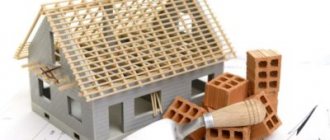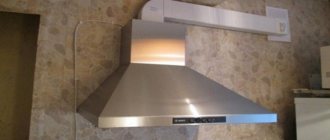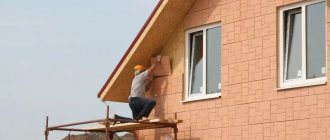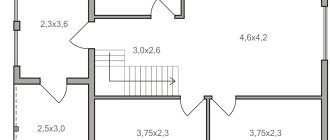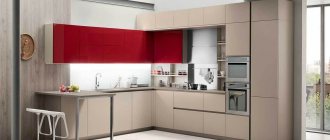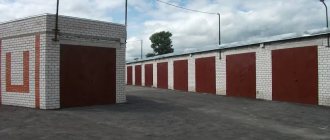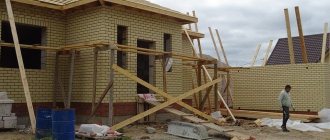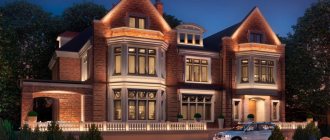By law, a residential building is an individual building that consists of rooms. As well as auxiliary premises intended to satisfy citizens’ household and other needs. Related to their residence in such a building. But let's figure out what a residential building is in reality and in simple words.
What is a residential building
The law says that a residential building is a separate building. That is, there are completely no neighbors in a residential building. And indeed. Where can neighbors come from, this is not an apartment? Which is surrounded by neighbors on all four sides.
A residential building is being built on a separate plot of land, and maybe. Both capital and non-capital buildings.
A capital structure, anchored to the ground by a foundation. The foundation can be of several types, depending on. On what soils it is used and how cheap it is to build a house. The foundation itself is a complex engineering structure. Which is capable of bearing the load of the entire mass of the constructed residential building. There are even special engineering calculators. Which calculate the construction volume of the future foundation depending on the planned area of the residential building.
Important:
The foundation firmly connects the house to the ground, essentially serving as its support. Which evenly distributes the weight of the entire building over its area.
The construction of a house begins with calculations of the foundation required for it. The required foundation is selected for specific tasks. Somewhere the soil freezes very deeply and the foundation must be deepened below the freezing level. And then it is insulated and covered with formwork from natural precipitation.
Somewhere the soil is very swampy and mobile and there is a possibility of the house subsiding. No foundation can withstand such overloads, except for a heavy concrete slab. Poured under the entire foundation of the house and associated reinforcement for structural strength.
In dry and sandy soils, an easy-to-install and affordable pile-screw foundation is used. Which can significantly save the cost of building a residential building. And it installs very quickly.
But such a foundation can only support a house using lightweight building materials. Those who are not so afraid of the mobility of the support. For example, a residential building made of timber, a panel house. As well as a residential building made of rounded logs or vulture panels.
Difference between objects: how are the main characteristics different?
To make it easier to understand the differences, we present them in the form of a table (Table No. 3).
Table No. 3:
| Residential Properties | Non-residential real estate |
| Compliance with technical and sanitary standards for living (sufficient area, certain sanitary and hygienic conditions, noise, thermal standards, lighting and air exchange, technical and fire standards). | The necessary living conditions for citizens are partially or completely absent. |
| Availability of communications (sewage, ventilation, water supply, electricity, gas supply). | Communications are partially or completely absent. |
| Use for commercial purposes is possible only in exceptional cases (lawyer's office). | Commercial use permitted. |
| Possibility of registration of citizens. | Registration of citizens is prohibited. |
We examined the main features of the legal status of residential and non-residential real estate. A number of issues remain unresolved to this day, but legislation in the housing sector is one of the most progressive and continues to actively develop.
Residential building foundation
In order not to go deeper into the construction process, let's briefly look at what types of foundations exist. And what each of them is used for.
- Strip foundations
are simple and cheap to use, but you need to accurately calculate the depth of soil freezing. And control the quality of concrete when pouring it. Otherwise, such a foundation may swell with frozen soil and cracks will appear along the wall of the house. But such a foundation can be built by one family, without involving specialists for the work. The main thing is that someone has experience installing permanent formwork and can calculate the required depth of recess. Houses are usually built on such a foundation, no higher than 2 floors in height. - Pile foundation
- a pile-screw foundation is used where it is necessary to quickly build a house. This type of foundation is being built for light frame houses, houses made of rounded logs or timber. The foundation is built and tied with a grillage to make the structure monolithic in just a week. - Columnar foundation
- Supports are located throughout the entire area of the future house, at a distance of two to three meters from each other. The supports are built from blocks or bricks, and then tied together with a grillage. Again, this is necessary to give the structure strength. This foundation is also simple to implement and can be assembled by a married couple. - Slab foundation
- used in the construction of heavy, multi-story buildings, up to 5 floors in height. Or houses of non-standard designs. A layer of concrete filling the slab under the house. It can reach a thickness of 30 to 110 cm plus reinforcement, which also significantly increases the cost of construction. Therefore, such a foundation is the most expensive of all. And during its construction, one cannot do without the help of specialists. Since the design itself ultimately turns out to be quite complex and the work of installing it is quite labor-intensive.
What premises cannot be used as housing stock?
From the point of view of the law, the emergence of the legal status of residential premises in a non-residential building is excluded. According to the legal definition of the term “residential premises,” one of its immediate features is the presence of registered citizens living in its area. Non-residential real estate, on the contrary, cannot be legally recognized as a place of residence. Therefore, it is legally impossible to register there. This will be the main difference between non-residential and residential buildings.
This rule was established by Decree of the Government of the Russian Federation dated July 17, 1995 No. 713. However, if a citizen arbitrarily occupied non-residential premises belonging to him by right of ownership for the purpose of living, no one has the right to evict him from there, however, in this case administrative liability may be imposed for lack of registration . To date, the law does not provide for the status of residential premises in a non-residential building.
Installation of a residential building and heating box
After the foundation is built, the box of the house is raised on it. Or they bring and assemble a ready-made prefabricated frame house structure. It is a constructor. Which was prepared in advance in production and sold as a set of building materials to the customer. Then a trained construction team will assemble this kit at the customer’s site in a matter of days. By installing the house and securing the house on a prepared and pre-built foundation.
The construction of a frame house or a house made of SIP panels now takes no more than a month. And this is “turnkey”, that is, the house will be completely built from scratch. Together with the installation of heating pipes around the house or the installation of convectors.
A small house can be heated with electricity. Energy-saving convectors heat the house very economically in winter. And heating costs in the cold months are no more than 5,000 - 6,000 rubles. Which is approximately equal to the payment for utilities in a 2-room apartment.
Then everything will depend on the area of the house itself. And on what constant temperature is maintained in it. If there is a child in the house, then there is no escape and you will have to heat it hard. And if the owners are adults, then they can get by with a standard 20 degree temperature.
It is very profitable to heat a house with a heated floor system, which evenly distributes heat throughout the entire residential building. But this system is not durable. On average it lasts 10 - 12 years. Although it happens that it works longer. It depends on your luck here.
If the house is poorly insulated, then no matter how much you heat it, all the heat will come out into the cracks in the corners of the house. By creating condensation in these places, which will contribute to the rotting of the wood.
To prevent this from happening. During construction, a special membrane is used. This is a fabric that serves as a vapor barrier. If the insulation layer and vapor barrier are not damaged, then the heat in the residential building will be well retained. And heating costs will be minimal.
After building a house, it is very easy to identify those corners and crevices in the walls. Through which heat escapes, using a special device - a thermal imager. Which will show the degree of freezing and the place where heat escapes from the house to the street.
This device is quite expensive and it is easier to order this service from a specialist. Why buy the device itself without professionally building residential buildings? After all, it is not known when the device will be needed next.
Residential building communications
If a residential building is built in haste, then there is no need for central sewerage or central heating. It’s like in an apartment – it’s out of the question.
A residential building with central heating and sewerage is a completely different level of construction. And not the one that is used everywhere now. And the cash costs for connecting central communications to the house will probably be half the cost of its construction. Gasification alone can cost 1 – 1.5 million rubles.
Therefore, in modern houses, an autonomous closed-type sewer system is used. The waste in it is eaten by bacteria, which are fed into the sump in the form of tablets. And they turn into water, which disperses underground in the area. It is completely harmless to the soil.
This waste-free septic tank operates on the principle of a mini treatment plant. Where dirty water settles in several interconnected pools. Then it is passed through filtration by plants, which take nutrients from dirty water, in return enriching the water with oxygen.
After purification, this water is released back into nature. In this way, the water of small rural settlements equipped with central sewerage is purified.
Only less expensive septic tanks that require pumping can be harmful. If the contents of such a septic tank leak into a reservoir, a minor environmental disaster may occur. Expressed in the death of fish and water pollution in the reservoir. Therefore, there is always a protected zone of flowing water bodies where it is not allowed to install this type of septic tank.
Near rivers and streams, no more than 15 km long. This zone is 50 meters from the water's edge. And the larger the river, the further the ban on the construction of septic tanks for pumping in the coastal area extends.
Near the sea, such a zone extends 500 meters from the shore. This means that many residential buildings in resort areas were built in violation of the rules.
Requirements for MKD
The basic requirements are specified in SNiP 31-01-2003, the regulations apply to:
- building location;
- altitude;
- bearing structures;
- apartments and common areas;
- internal communications;
- activities of organizations located in commercial premises of apartment buildings.
This document does not apply to mobile buildings and blocked buildings . According to Art. 49 of the Town Planning Code, a blocked building is a building of up to 3 floors, which consists of separate blocks, intended for the residence of several families.
Such a building has common walls between blocks without openings and a separate exit from each apartment to a common area.
Why are residential buildings so popular?
People often mistake a pretty picture for the truth when they fall for a developer’s advertisement. Or after reading other people's stories on the forum about country life. Then they run and buy houses, which are captivating with their cheapness and large size (60-120 m2).
People think that they are buying a large apartment for a small amount of money. Well, how small. Everything is relative, of course, so you need to count. That this amount is simply not enough to buy a 1-room apartment in Moscow.
We will focus on 3.5 – 3.8 million rubles. After all, this is exactly how much it costs to build a minimal frame house when ordering from a company. Which in size will exceed even a three-room small apartment.
But by generally accepted standards, such a house. It will more likely resemble a large bathhouse with a relaxation room, rather than a full-fledged residential building.
Although, when you are 18-20 years old. Such housing may seem like a piece of paradise. Where you really want to spend your time. Meeting friends and planning a family. Therefore, why not.
But agree, when you are 40 years old. And you have already seen in your life how other successful people live. You no longer want to go to the bathhouse and be happy just for that. That there is a roof over your head and warmth. Therefore, it can be considered this way.
For a young family, a small residential house. This is an excellent solution to the housing problem. But middle-aged people need to think about something more serious.
Looking at a full-fledged brick house, with spacious rooms. And necessarily with all central communications.
So as not to feel disadvantaged while living on your own land. On the contrary. Go out every morning to clear the snow from the paths, with your head held high.

